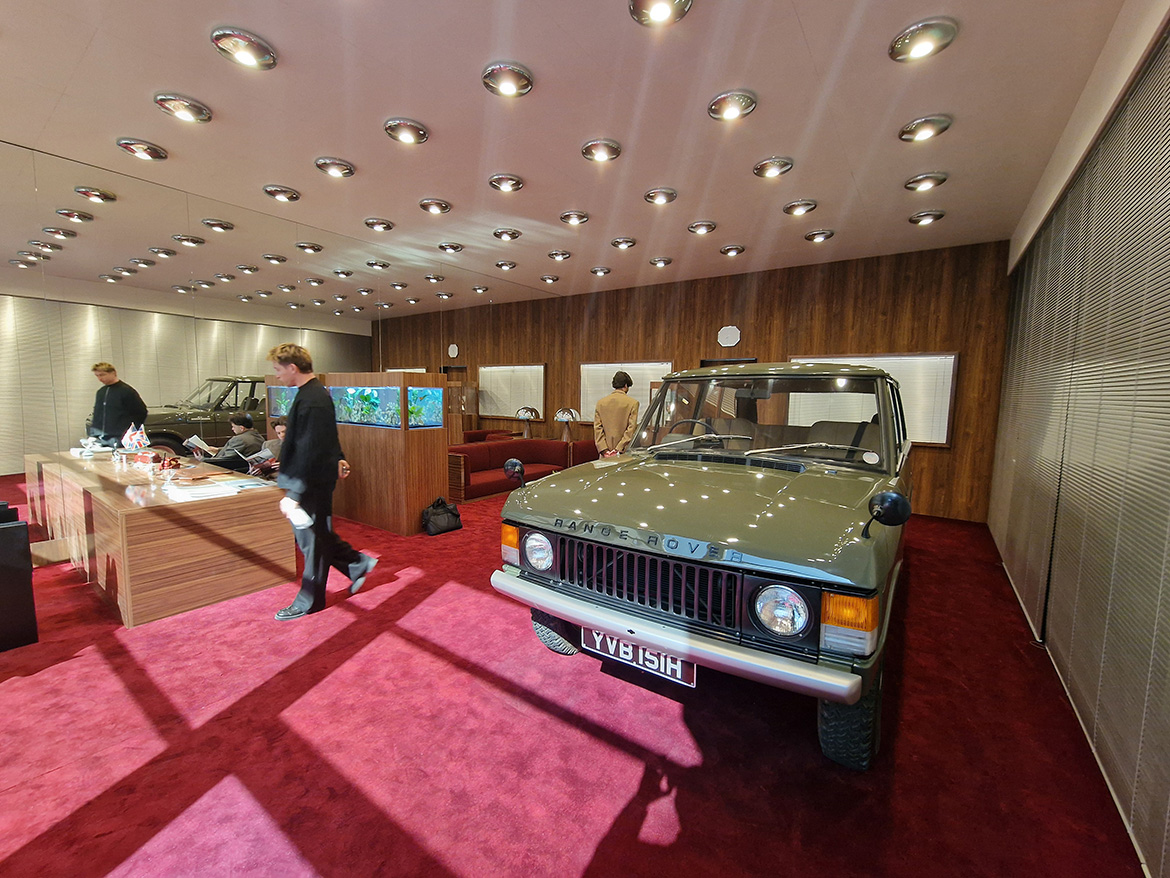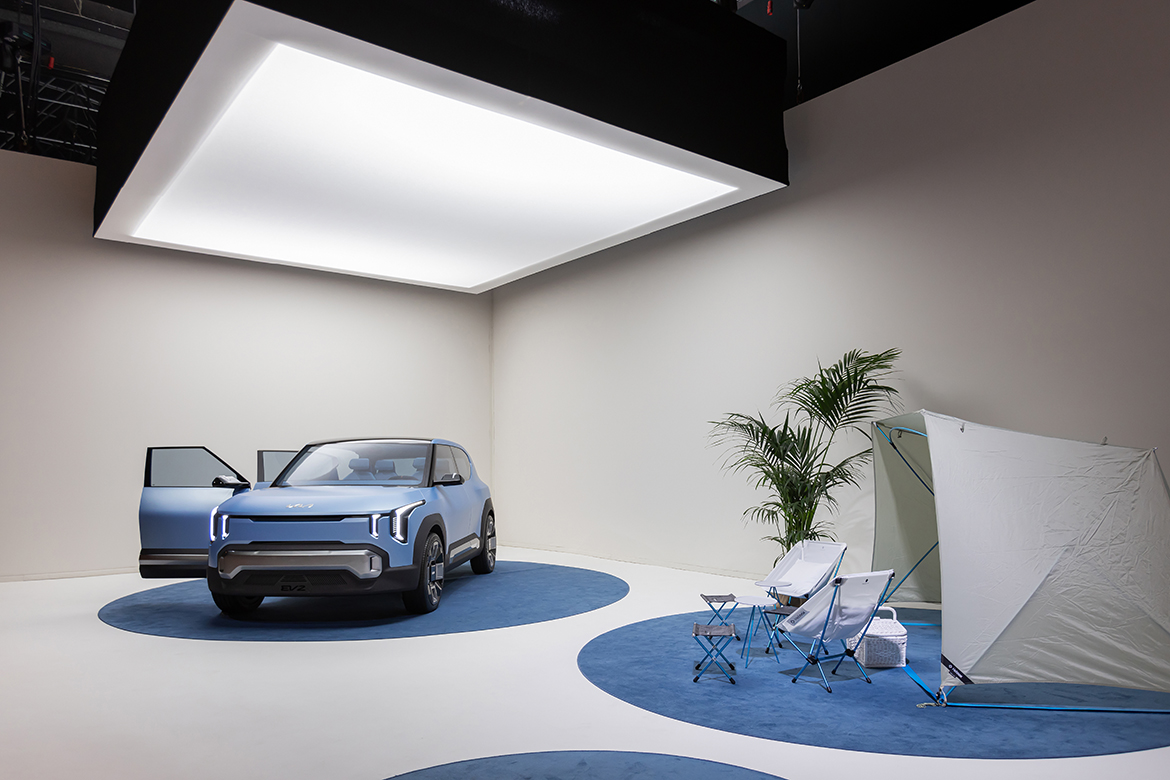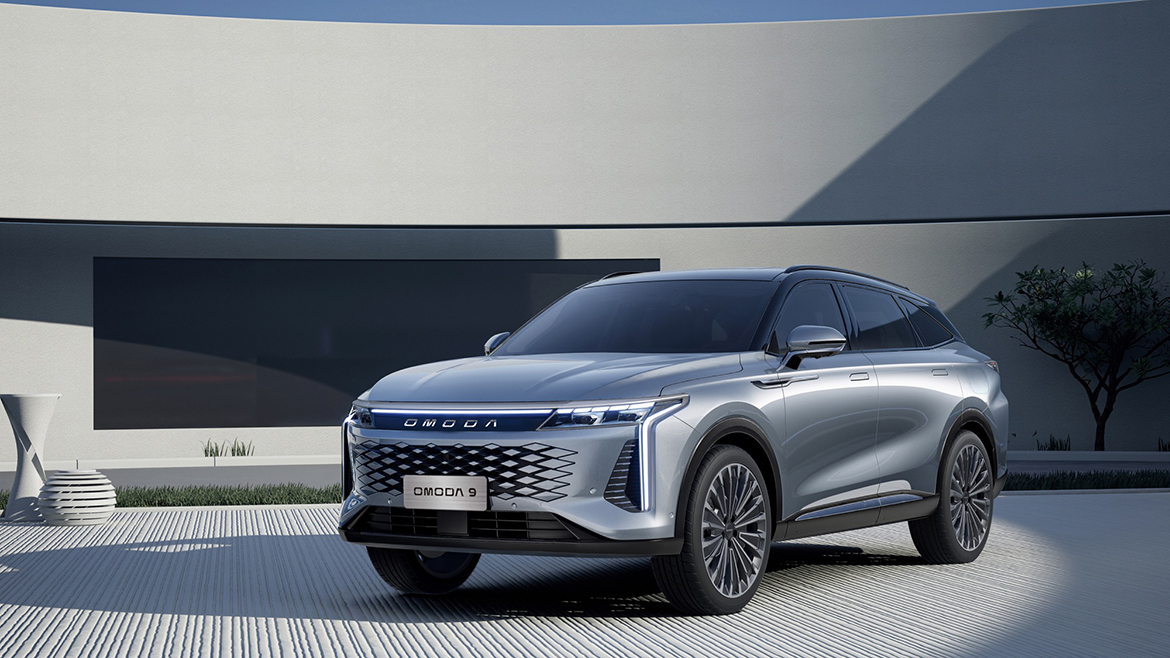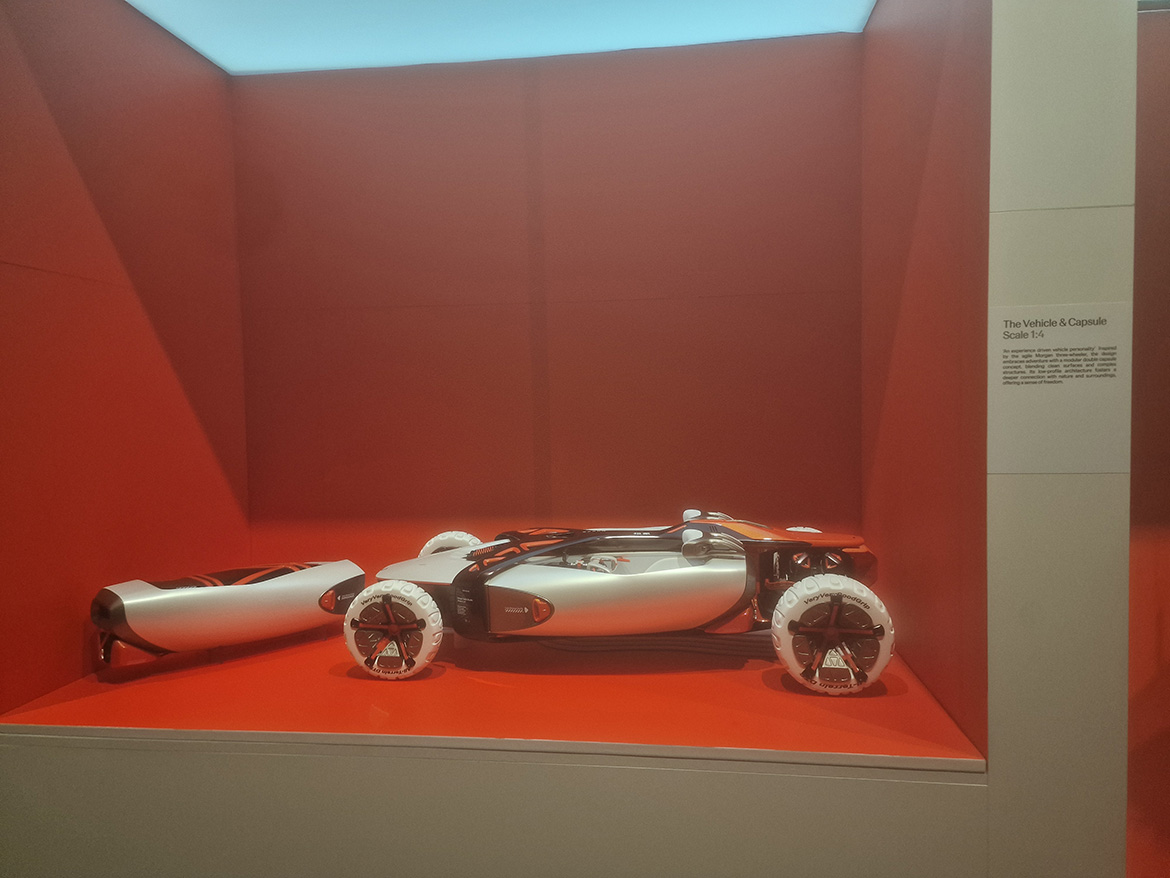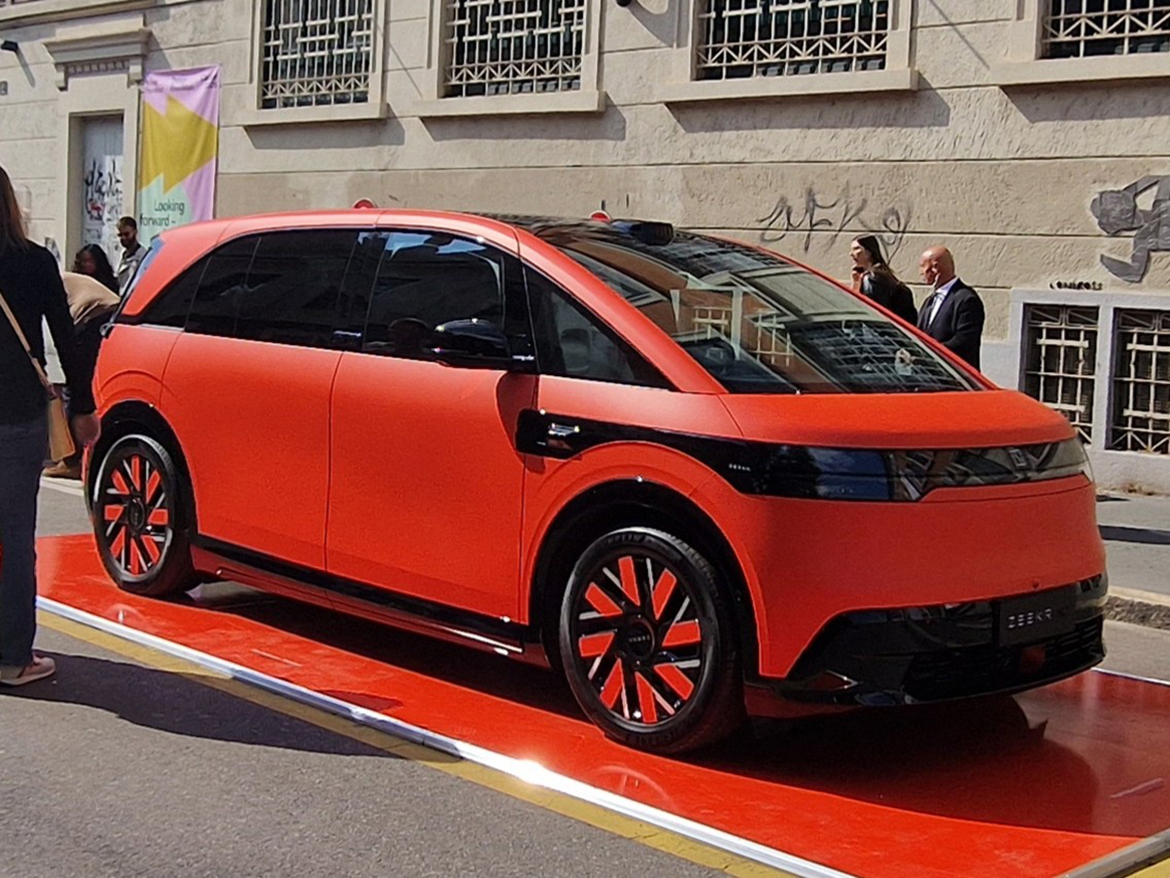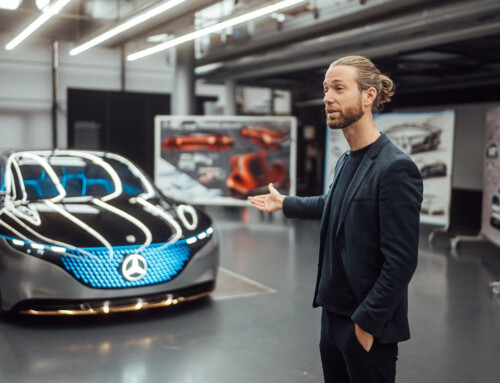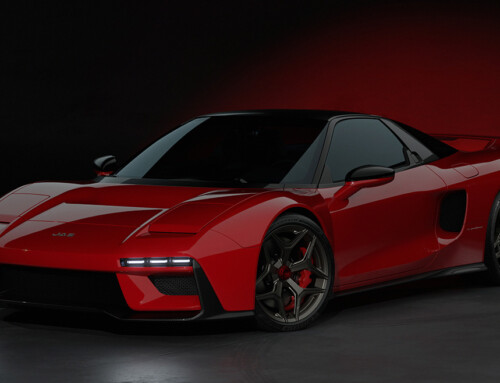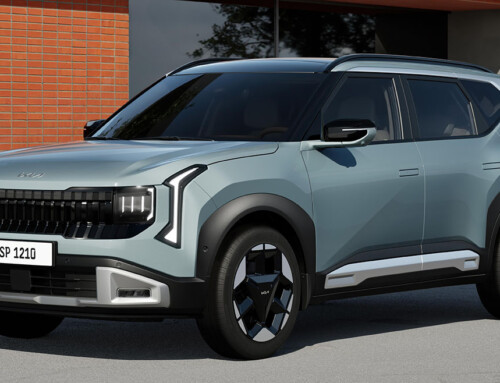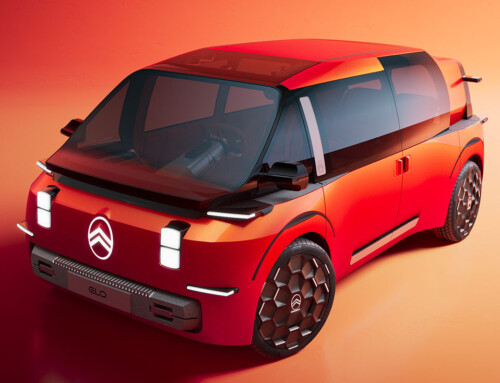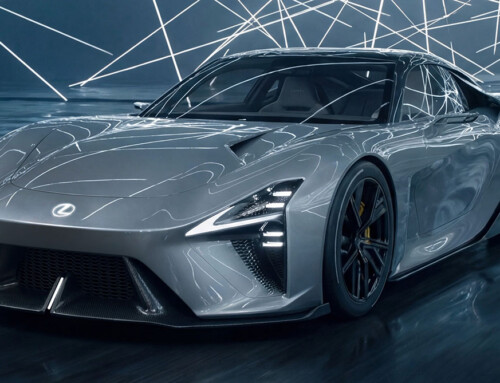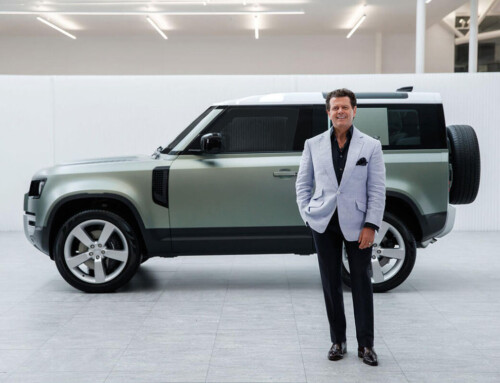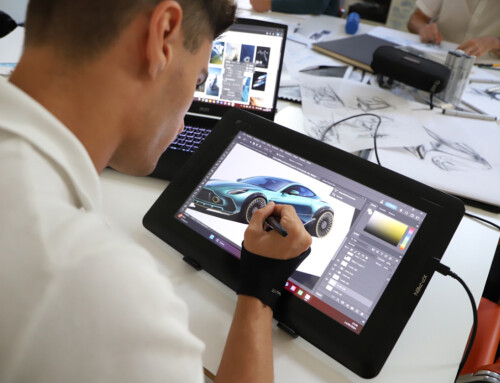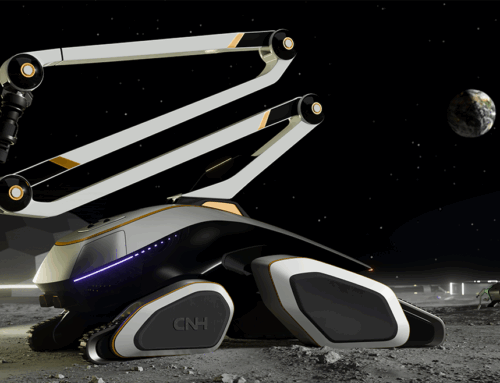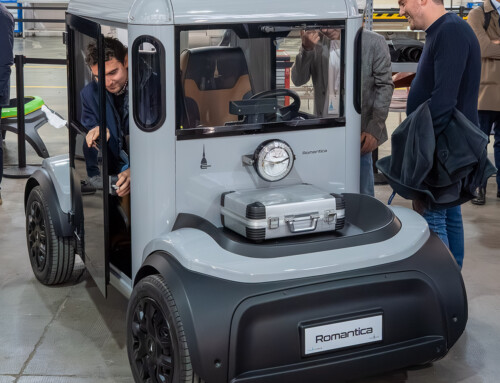Past, present, and future—art as an expression of design philosophy and a symbol of evolving creativity. These are the themes explored and celebrated by the installations and events presented by several car manufacturers during Milan Design Week, which once again drew large crowds to the city from April 7 to 13. From art exhibitions to multisensory experiences and new product reveals, design remained the undisputed star. Here are a few highlights:
Range Rover: when the past still inspires
Range Rover, now a flagship brand under the new JLR umbrella, created an installation in Piazza Belgioioso that celebrated the connection between past and future in a unique way. Two environments, created in collaboration with NUOVA, a Californian design studio, served as a backdrop for two cars representing the beginning and culmination of the Range Rover story. The common thread: color. In the first room—evoking the 1970s with immersive sensory elements such as lighting, background music, wood and Carrara marble furnishings, and Aeir-brand scents—the original pre-series Range Rover stood proudly in classic Olive Green. That same color, reinterpreted for today, was used on the 2025 Range Rover Autobiography in the second room, a more metaphysical setting featuring white columns and stones. Accompanying it: the Wet Stone fragrance and ambient melodies.
Kia: a journey into the human soul
In recent years, Kia has often explored themes such as multiculturalism, encapsulated in its current design philosophy “Opposites United.” The brand hosted a dual exhibition: one titled Transcend Journey at East End Studios on Via Mecenate, where it showcased the EV2 concept—previewing an upcoming electric B-SUV—and the adventurous WKNDR concept of the new PV5 electric utility vehicle, both introduced by design chief Karim Habib. The other, Opposites United: Eclipse of Perceptions, was housed in the Museo della Permanente and featured four artworks by Philippe Parreno and A.A. Murakami. Two of Murakami’s pieces, The Cave and Beyond The Horizon, offered particularly evocative experiences. The Cave featured still waters and red light with robotic arms moving through the scene—symbolizing the creative drive of the human soul—while Beyond The Horizon filled a dark wall with giant, floating bubbles.
Omoda 9: a growing personality
More pragmatic, without artistic ambitions but with a clear philosophy guiding its brand identity, Omoda revealed its latest model on Via Tortona. The brand, which entered Europe alongside sister marque Jaecoo under the Chinese giant Chery, introduced the Omoda 9—marking the next step in its fashion-forward, high-tech evolution beyond the pioneering Omoda 5. This large SUV represents a stylistic maturation, with less emphasis on the distinctive oversized grille of the Omoda 5, replaced by a more refined front end with luminous horizontal and vertical lines that convey an aristocratic yet reassuring presence. There’s more: proportions were defined using the golden ratio, and the aerodynamics were honed to optimize comfort and efficiency. Great care was also given to the onboard experience, not just through materials and design, but also with a tactile interface (including touch controls on the steering wheel), a 24.9” display, and a dedicated Sony sound system.
Zeekr: the meaning of connection
Zeekr, one of the most intriguing brands in the vast Geely portfolio—alongside Lotus and Volvo—also brought its vision of future mobility and sensory art to Design Week. Teaming up with Lotus and other fashion, furniture, and leather brands (Konzepthaus, Leonhard Kurz, Royal Smit & Zoon), Zeekr filled the Phid Hub on Via Tortona with talks and events. On the product side, the main attraction was the Mix, a futuristic and versatile electric MPV featuring pillarless “wardrobe” doors and rotating seats. First unveiled in Beijing in April 2024, the Mix is a digitally connected long-range vehicle designed to encourage interaction between passengers. This idea was also reflected in the exhibition The Art of Connection, which featured a dynamic dual installation of two walls with light compositions that responded to the visitor’s hand movements. Nearby, a 1:4 scale concept car created by a team of design students was on display—somewhere between a space shuttle and a racecar—along with full-scale items such as its steering wheel, a backpack, and a raincoat.

